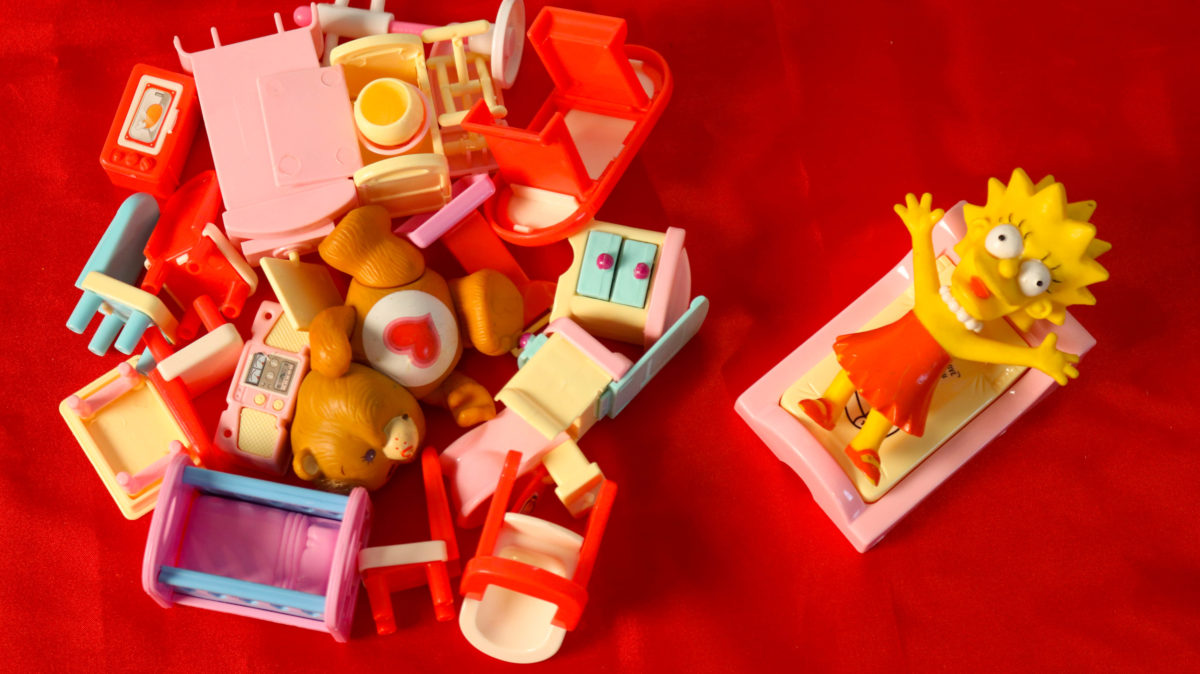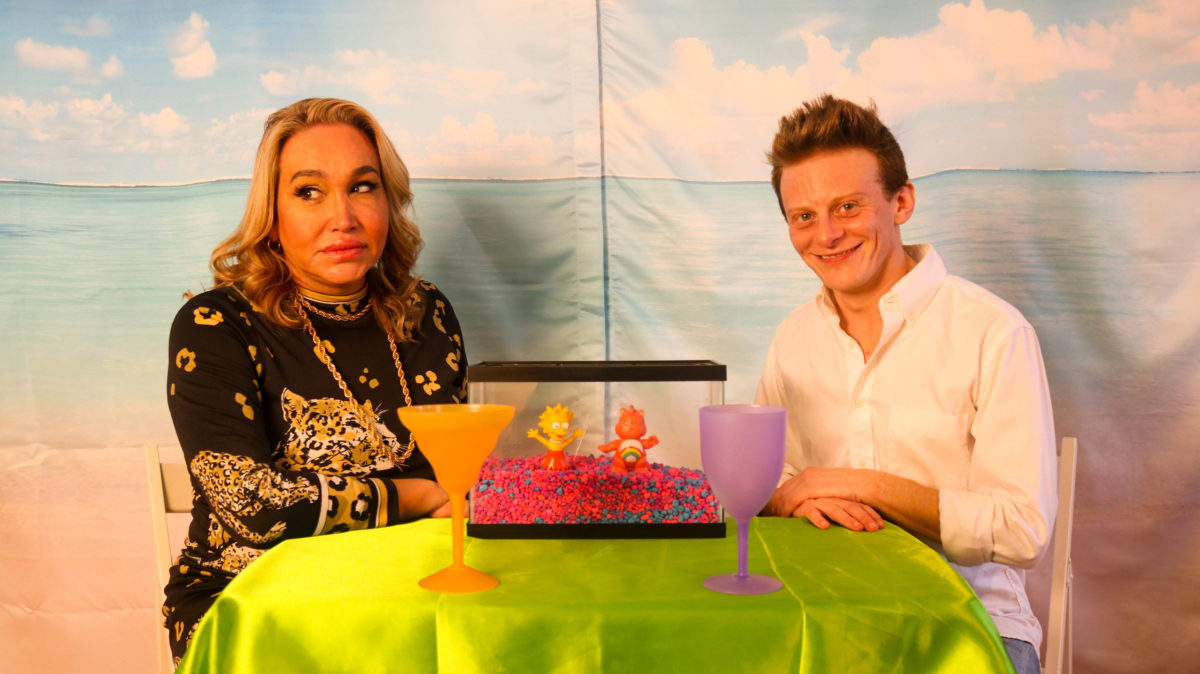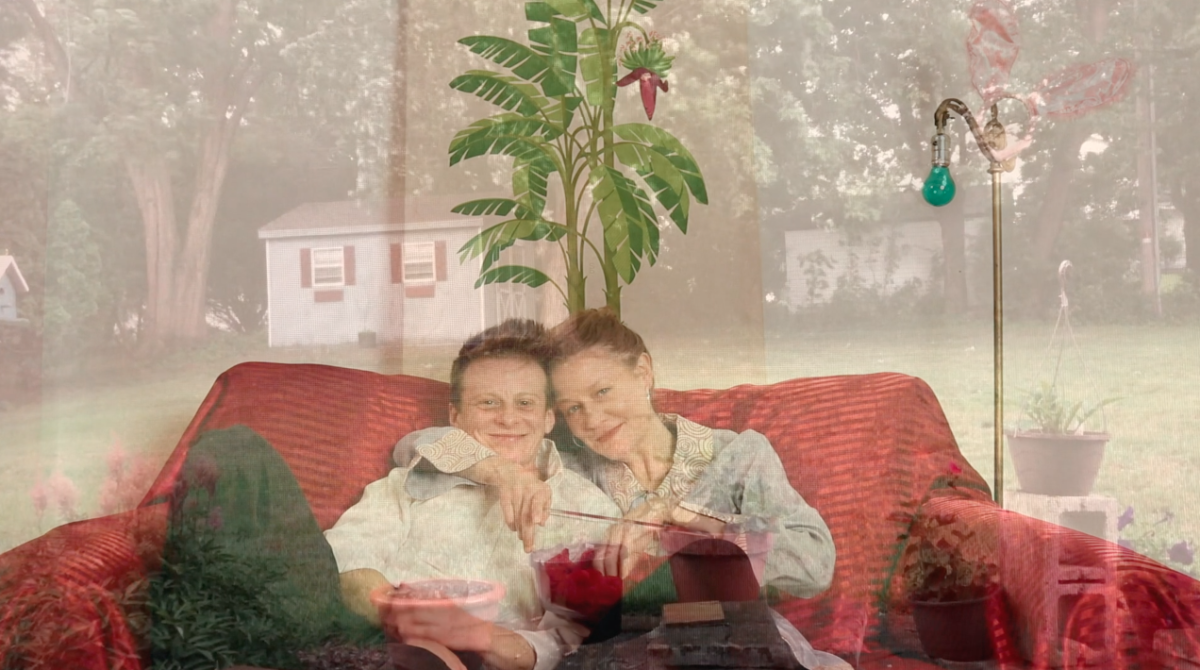While Patty Gone has been curating Off Brand Video for The Believer, a series that highlights queer video art, they’ve also been working on their playful, surrealist, and essayistic soap opera, Painted Dreams.
We’re pleased to premiere the newest season, along with commentary from critics Nick Salvato, Emily Colucci, Ashley Chambers, and Will Darling. Spray some rosewater, turn on the mood lighting, and snuggle up with a stuffed animal of your choosing. This isn’t a dream you want to miss.
—Hayden Bennett
Painted Dreams Season 3 stars Ashley Chambers, Jess Barbagallo, Trystin Bailey, Emily Davis, Emily Reilly, and Cecilia Gentili, with a soundtrack by Jon Ruseski and vocals by Kelvin Moon Loh. It was shot from July 2019 to February 2020.
EMILY COLUCCI: As Patty Gone recalls Melrose Place’s bombing, the explosive third season inferno sparked by a chit-chat between Kimberly and her mirror-based alter-ego, I drift into a nostalgic reverie about a similarly iconic scene: Kimberly’s Season Two wig reveal. As she rips off her auburn locks to expose shorn hair and a jagged scar (gasp!), I focus on her surrounding bathroom decor, namely a set of abominable abstract paintings. Are these hideous reflections of her unhinged mind?
Gone’s Painted Dreams, Season 3 should satisfy any lover of camp hysterics, filled with cathartic yelling, meaningful stares, lip quivers, and snot-nosed sobbing. But what I fixate on the film’s impressive array of tchotchkes. While Kimberly’s bathroom exudes upper-class bad taste, Gone’s set design derives from a class aesthetic a bit lower. And it’s not just the elegant red Solo cup jammed on a wine stem or “Sun’s Out, Guns Out” beer koozies.
The tacky Happy Meal freebies, ponytailed Little Pretty kitties, muscle-bound He-Man action figures, and queasily saccharine artworks that make up the film’s landscape are the products of a late 20th century working class American upbringing rescued from a dusty thrift store shelf. Do childhood memories of throwaway toys with a side of McNuggets provide as much momentary happiness as reminiscing about bygone televised melodramas? Were they just as influential in teaching us gender, romance, and even sex (like you didn’t make your toys dry-hump!)?
A scattered smattering of these blank-eyed gewgaws spins and flashes in disco lights. Like Kimberly’s painted nightmares, is this the swirling consciousness of dedicated viewers of long-cancelled TV dramas?
Emily Colucci is an art writer, curator, and co-founder of the Internet’s camp hub, Filthy Dreams.

NICK SALVATO: The camera in Patty Gone’s Painted Dreams lingers intently over odd objects and sensuous surfaces. Let me mirror the move by fastening onto one of the simultaneously poetic and preposterous props that hovers in and floats through Gone’s arrangements: a plastic Lisa Simpson doll. Accompanied by other members of her iconic primetime family in the earlier two seasons of Painted Dreams, she is given a solo act in its third. Lisa is thus untethered not only from the bother of brother but also from Gone’s slyly ambivalent critique of consumption. Rather, for this iteration of Painted Dreams, she invites our look at her to conjure Gone’s identification with her, an avatar of brainy girlhood who can also emblematize, in this brilliant mashup of melodrama, video essay, and home movie, a renovated Gurlesque aesthetic for a new decade. If the work to which Gone puts Lisa is at once a distillation and an expansion of her prior role in the series, then she is a figure in miniature for the overall ambitions of Painted Dreams’ third season: rawer in confessional portraiture, yet also rangier in its more psychedelic palette and eccentrically fuller cast of characters. These ambitions are intensely, wildly achieved.
Nick Salvato is the author of Television Scales, Obstruction, Knots Landing, and Uncloseting Drama.

WILL DARLING: When I first started watching Painted Dreams, Season 3 I was simultaneously doing my physical therapy and eating a large bowl of Rice Krispies. I am at that point in quarantine in which whenever I have a tablespoon of energy I rush to do everything I need to do at once before I am pulled back into a sudsy depression. I abruptly stopped my frantic multi-tasking about two minutes into PD3, as soon as I glanced at a still of a small plastic Lisa Simpson children’s toy standing on a wooden coffee table in the middle of a mid-90s looking living room with a storm raging in the background. I yelled “OH SHIT THIS IS GOOD,” and started cracking up, transfixed for the rest of the series. One of my favorite things about Patty Gone’s work is how they lean into white suburban mom aesthetics—from a shirt that reads “Living the Dream!” or a plaque that says “Dancing in the Moonlight” to a can of Febreeze sitting on a dinner table. Patty nods to these ideas of taste that I feel like millennial queers often write off – but are so humble and direct with their messaging. You know what, I DO want to live the dream and dance in the moonlight. I DO want to find love and family—concepts that the soap operas revolve around. If “soaps know that love is the real apocalypse” like Patty says, then I don’t know. Maybe now I’m going to watch more soaps.
Will Darling is a queer art writer and founder of Good Boy Designs.

ASHLEY CHAMBERS: Lisa Simpson transcends identity and attains infinitude when Patty Gone crossbreeds her sprawling yellow arms and hands—primed for surrender—with a leisurely, late afternoon ratatouille. Floodlit with dollar store strobe lights, Simpson knows the script without reading the lines, concretizes love as requisite for the marriage of life and art in chronic, tornadic recumbency. Simpson and Gone are sisters in infinite play, eyes wide open, upstaging the unrivaled heroine of each and every soap opera, and determined to want despite what wanting destroys.
Patty Gone’s dream finally materializes in Season 3—they are their own dream.
The apocalyptic rupture between self and dick transpires in their forage for intimacy, in the air, in their hand, starting something that can’t be finished, fucking what can’t be controlled, and it’s beautiful. Who else rewound this fractured monologue over and over again, leaning in to listen and make certain they also got those hushed tones right? And am I qualified to assert my gratitude for the dream that is Patty Gone as someone who was cast as Kimberly’s demon while still recovering from the flu, as Blair’s abusive, alcoholic, off-and-on-again lover Chuck, as myself, BC, the recipient of Gone’s vulnerability in real life? Blair declares her love for Chuck after his father dies, and on the screen, he storms away—I depart Gone’s Bushwick apartment—rose petals ascending after I let my hair down and join Gone off camera, trading reaction shots, primed for the next episode.
Ashley Chambers is a writer, multimedia artist, and theologian living in the Pacific Northwest. Her first book, The Exquisite Buoyancies, is forthcoming from New Michigan Press in 2021.




